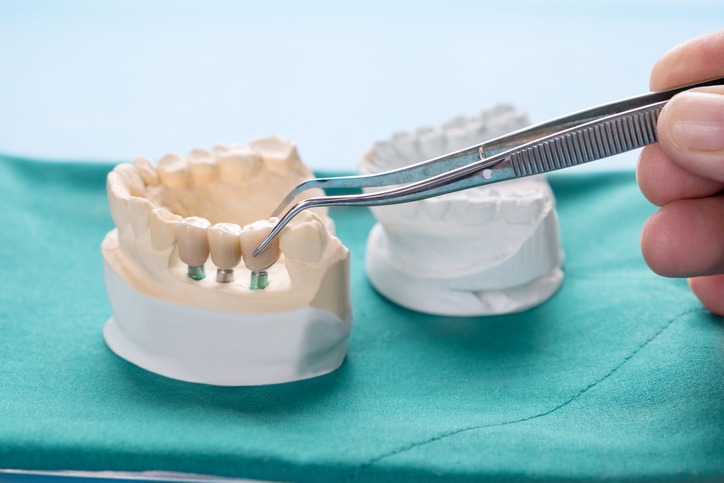For the most part, you can find a dentist downtown. That is because most people live and work near the downtown area, so it is convenient for them to go to the dentist while working or living nearby. Yet, with some dentists’ varying services, it can be hard to know if their services are what you need. For instance, if you needed to get dental bridges or crowns. These are both forms of permanent restorations, but some dental offices may only offer one or the other. See how these two stack up against one another below.
Understanding Permanent Restorations
Permanent restorations are used to replace missing teeth. Dental bridges are often used to replace one missing tooth, while crowns are used to cover a set of teeth that have been damaged. The dentist will decide which restoration is best for the patient.
A dentist may use a dental bridge if one or more of the patient’s teeth are missing. A bridge consists of an artificial tooth and two dental crowns. It is attached using dental cement and spans the gap left by a missing tooth or teeth. It works much like a natural tooth. The anchoring elements are made of plastic or composite materials such as gold, titanium, or porcelain. The entire restoration is designed to fit the patient’s mouth.
Dental bridges can also be used to replace a set of teeth that have been damaged by decay, trauma, or periodontal disease. Crowns usually replace a single tooth lost due to tooth decay, trauma, or other dental problems.
Dental crowns are usually used to protect teeth from further damage. A dentist will use a series of crowns on a patient’s smile, one on each tooth in the upper and lower arch of the mouth. They may also be used to fix an unerupted tooth or to replace an injured tooth that has been lost. Dental crowns are made from metal or porcelain, depending on the restoration chosen for each patient.
A dentist needs to find out whether the stages of damage in a patient’s mouth can be fixed by using dental crowns. Most of the time, a dentist will use dental crowns for damaged teeth. Crowns are made from metal or porcelain, depending on the restoration chosen for each patient.
If a dentist suspects that tooth decay is to blame for damage to one or more teeth, they may recommend that the person get a root canal treatment. It is a treatment that can save people’s teeth. If the teeth are badly damaged, they will be removed and replaced with dental crowns.
Crowns are attached to natural teeth using dental cement. They may also glue in place if the dentist deems this attachment method appropriate. Dentists will choose an adhesive for the patient depending on their needs. They may select waterproof, such as a resin adhesive or cement, to protect damaged teeth from further damage.
If the patient needs their crowns to be longer lasting, a dentist may choose to use dental cement. To strengthen the bond between the crown and the remaining tooth, a dentist uses nickel-titanium (NiTi). The cement is then hardened with a laser beam.
The dentist will prepare the tooth for crown placement and remove the remaining tooth. This patient should schedule an appointment with a dentist to discuss what kind of restoration is best for them.
People need to become familiar with the different restorations available to them as they decide how to remedy their smile issues. Restorations come in different forms, so you must select a method that will yield lasting results.
Alternative to Bridges & Crowns
Dentures are a good option if you miss one or more teeth or have difficulty chewing and swallowing. A basic denture includes a crown on the remaining teeth attached to a bridge. Although they may end up looking similar to the person’s natural teeth, they do not function in the same way. The main difference is that dentures contain natural teeth as opposed to a bridge that consists of artificial ones.
After extensive consultation with your dentist, the decision to compensate for a missing tooth by replacing it with an implant-supported prosthetic or removable denture is best made. Similar to a bridge, the prosthesis will be fixed using dental cement. It can either be attached using an attachment such as:
- An archwire
- Conventional overdenture
- Supported by a crown over the area left to the enamel
As you can see, these two means of restoration have pros and cons. Talk to your dentist downtown to get their insight on what dental solution is right for you!

